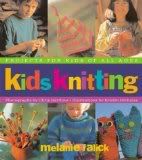Spiders may not be supernatural creatures like ghosts, goblins, or witches but they are pretty scary! However these 8 legged creatures are not too scary for the little ones. Plus, spider crafts provide an opportunity to learn about living things. Here is a cute and fun spider decoration craft for preschoolers to make. In fact, it's easy enough for even toddlers to do with a little help from an older person or adult! These spider crafts make a great decoration to put on your front door or window to greet trick or treaters on Halloween!
What You Need
*Card stock or construction paper (any color but black)
*Black tempera or poster paint
*Paintbrush
*Googly eyes
*Glue
Instructions
1. Using the paintbrush, paint your child's palm and all fingers but not the thumb with black paint.
2. Have your child press their hand down on the paper firmly.
3. Paint the child's other hand the same way as instructed above.
4. Have your child press that hand down on the paper, overlapping the first handprint and making sure the fingers are across from the ones in the original print. This will form the spider's body.
5. Have your child use the paintbrush or his or her fingers to paint any areas of the spider's body that are not filled in. Let the paint dry.
6. Glue on googly eyes. Let dry.
However this is not the only way to do it! Here are some tips are suggestions to make it even more fun to do with your child!
Cover the work area with newspapers. This project could get messy!
If you prefer, you could use black construction paper and a different color of paint.
If you want a spider cutout, trace the child's hand (minus the thumb) onto a piece of construction paper. Place the other hand so that it overlaps the first handprint, trace all but the thumb, and cut around the edges. Glue on googly eyes, punch a hole in the top, and hang up with a piece of string.
Your child might like to use paint in a different color to add a mouth and/or nose.
To really make the spider stand out, let the paint dry completely and embellish with glitter glue or metallic paint. Or you could glue on some pom poms or stick on some stickers.
To add to the educational aspect of this project, find a book or website that has lots of pictures of different kinds of spiders to look at with your child. Then encourage him to make a spider that looks like their favorite one. This is fun for you and your child. It even encourages them to learn about nature and express their creativity!




